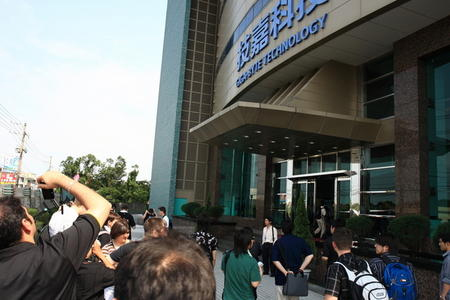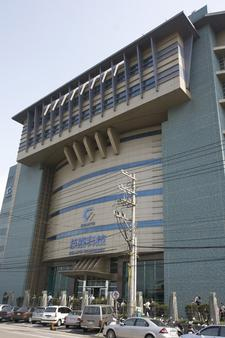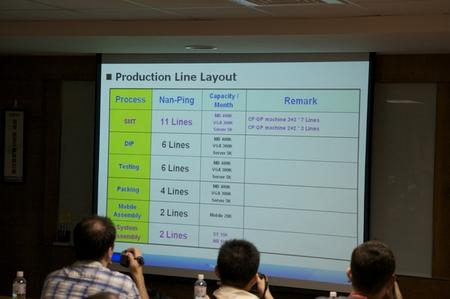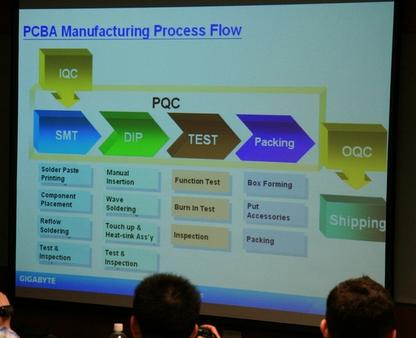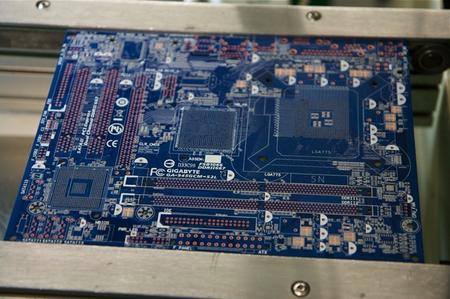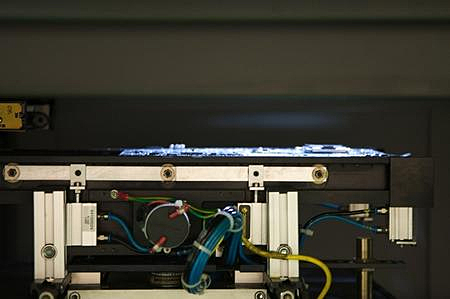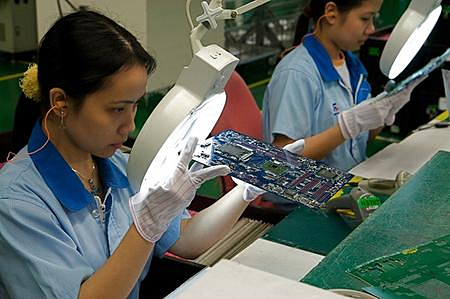Making Motherboards The Gigabyte Way
Enthusiasts may know tons about the hardware that comprises their PCs, but it’s much more difficult to fully appreciate how those components come to be. We spend so much time talking about bleeding-edge manufacturing processes and the millions of transistors etched into silicon, then distill the technology into its asking price without appreciating the R&D invested in creating a new product.
But let’s be fair. One reason the average computer user’s interest in the inner workings of tech is so superficial is that hardware manufacturers’ communication is deliberately simplistic. Fortunately, there are exceptions. At the last Computex consumer electronics trade show, which is held yearly in Taipei, Taiwan, Gigabyte invited the press to visit one of its factories. We obliged.
Come along, as we take you on a pictorial tour of how some of your favorite motherboards and graphics cards go from lifeless components to—well, lifeless, yet functional, hardware.
Gigabyte is one of the top three motherboard manufacturers worldwide. The Taiwanese firm has several plants in Taiwan and its Nanping site is one of the largest. Located in Taoyuan, it has 1,200 employees and covers 45,000 square meters of floor space on eight floors.
The Nanping plant is also used for the production of Gigabyte notebook and desktop computers. A total of 400,000 motherboards, 300,000 graphics cards, 20,000 cell phones, 15,000 desktop computers, 10,000 portable computers and 5,000 servers can be produced on the factory’s assembly lines every month!
During our tour of the Gigabyte facility, we didn’t get a chance to see how complete computers or cell phones are manufactured, so we’ll instead focus on motherboard and graphics cards.
There are three main stages in the fabrication of a motherboard or graphics card: SMT, DIP and testing (we’ll tell you more about each of those acronyms in a bit). The different stages go through different assembly lines on different floors of the plant. The process is incredibly optimized, with very little left to chance.
The first stage in the assembly of a motherboard is obviously the fabrication of the printed circuit board on which the motherboard is built. Gigabyte doesn’t handle this stage directly, but outsources its PCBs from a third-party specialist. The PCBs arrive in Nanping fully ready, with circuit traces, varnish coating, drillings and markings.
The PCBs are then sent to the first stage of fabrication: the SMT lines. SMT stands for Surface Mounting Technology. This process is used to solder small components that don’t need to be soldered through the PCB. They’re simply surface soldered.
Before entering the SMT lines, we had to put on adorable little blue overshoes, then go through an airlock where we took an air shower. The shower’s purpose is to remove any dust adhering to your clothes, which might otherwise end up in a solder joint, where it would cause trouble.
As we said, SMT components are simply soldered onto the surface of the printed circuit board. So the first step in the process is to apply a layer of solder paste to the PCB. That’s done by the Solder Paste Printer. A mask is used to make sure the paste ends up only on the proper areas of the PCB.
Get Tom's Hardware's best news and in-depth reviews, straight to your inbox.
Once the paste is applied to the PCBs, they’re taken over by automated SMT machines. These machines are equipped with several "heads" that pick and place the various components in the proper locations, while the PCB follows a predetermined path. The speed at which the machines operate is impressive. It takes them less than an eighth of a second to position a component.
To maintain such a rate, a highly effective component supply system is needed. The solution used is a lot like a machine gun—components are encased in tape and stored in the SMT machine on reels. This system also makes it possible to change the setup of the production line for a new model very quickly. All that needs to be done is to change the reels and reprogram the machine.
Only the smaller components are stored this way. Larger circuits, like chipsets, sockets and processors, are stored in racks. They’re placed on the board by slower SMT machines (one second per component). Optical precision guidance is used to place the components on the board.
Once all the components have been placed on the printed circuit board, it goes into a convection oven heated to 250°C. The solder paste that was printed onto the surface of the motherboard during the first stage melts and solders the SMT components to the board. Proper completion of these stages is checked via visual inspection of the PCB.
-
Fadamor Remind me not to buy any Gigabyte products from when those reporters were there. We all know how reporters like to shed! :)Reply -
Mr_Man I couldn't help but notice that with the exception of 3 men in the last 2 pictures, every other employee of Gigabyte seems to be female. I always associate factory jobs with men, but apparently things are different in Taiwan. Of course, it could just be that the photographer "forgot" to take pictures of men.Reply -
pogsnet Wow! you should also visit the other top 3 makers ASUS and MSI. Let's compare them which one is much professional on this. ^_^Reply -
gaiden very insightful. im guessing women workers are on the floor probably because they are more agile with their smaller hands. After all, it's only fair for women to make 'mother'boards i assume :)Reply -
lightfoot__ Wow, that is cool. I have seen wave soldering in person so I know how precise and neat that is. I'm not sure I like how that guy is looking at my DS3L in slide 18 or 19 thought...Reply
Whisper silent... I hope those are earbuds and not earplugs then. I think I'd have some form of carpel tunnel in a week there. Makes me appreciate the boards a bit more.
Thanks for a smart (though not super detailed) write up with fewer then usual errors in the writing! -
Slobogob The Board in picture 17 has a really wicked rear. 4 RJ45 (possibly LAN) connectors and 8 USB? Which Gigabyte board is that?Reply
